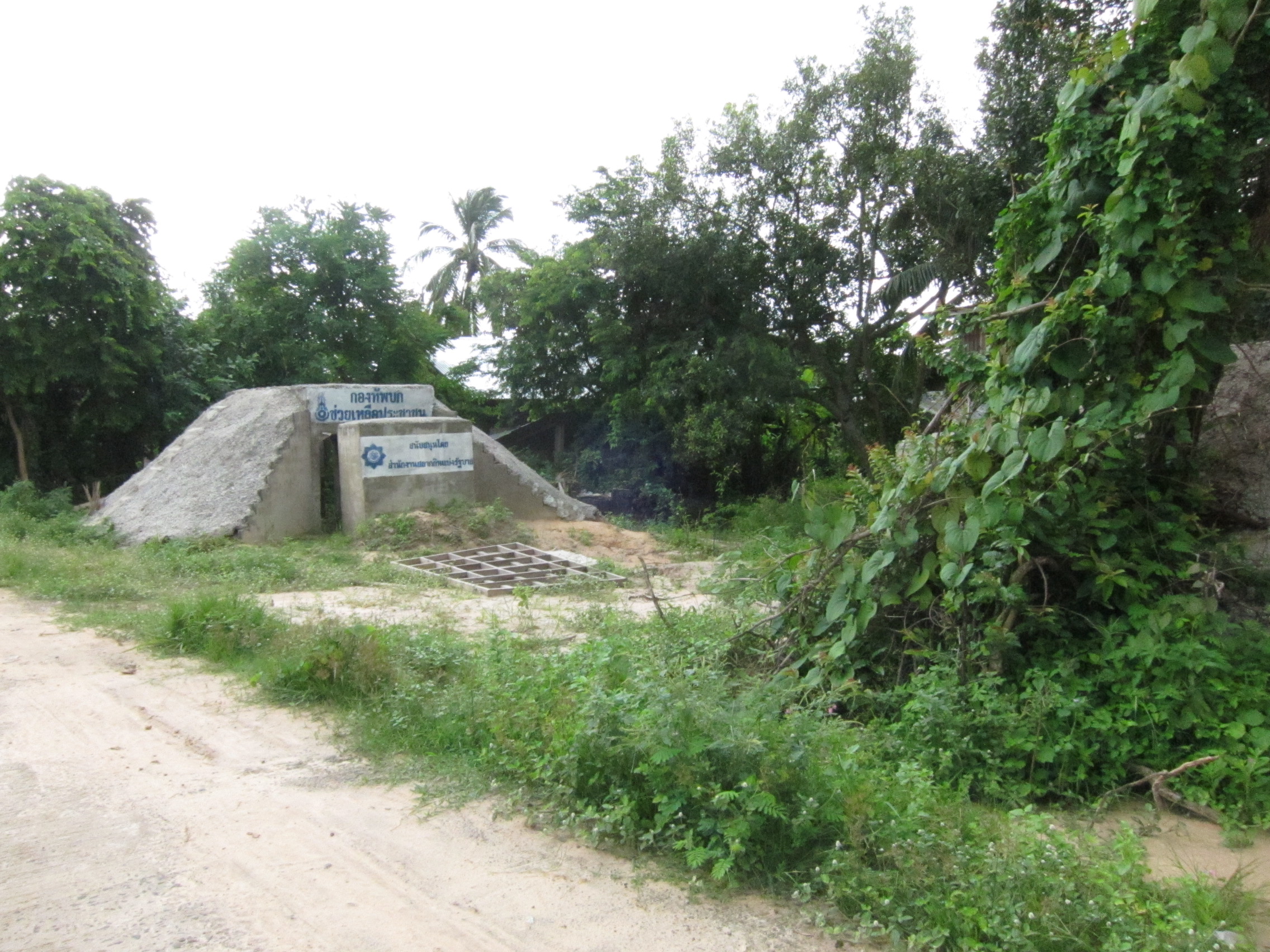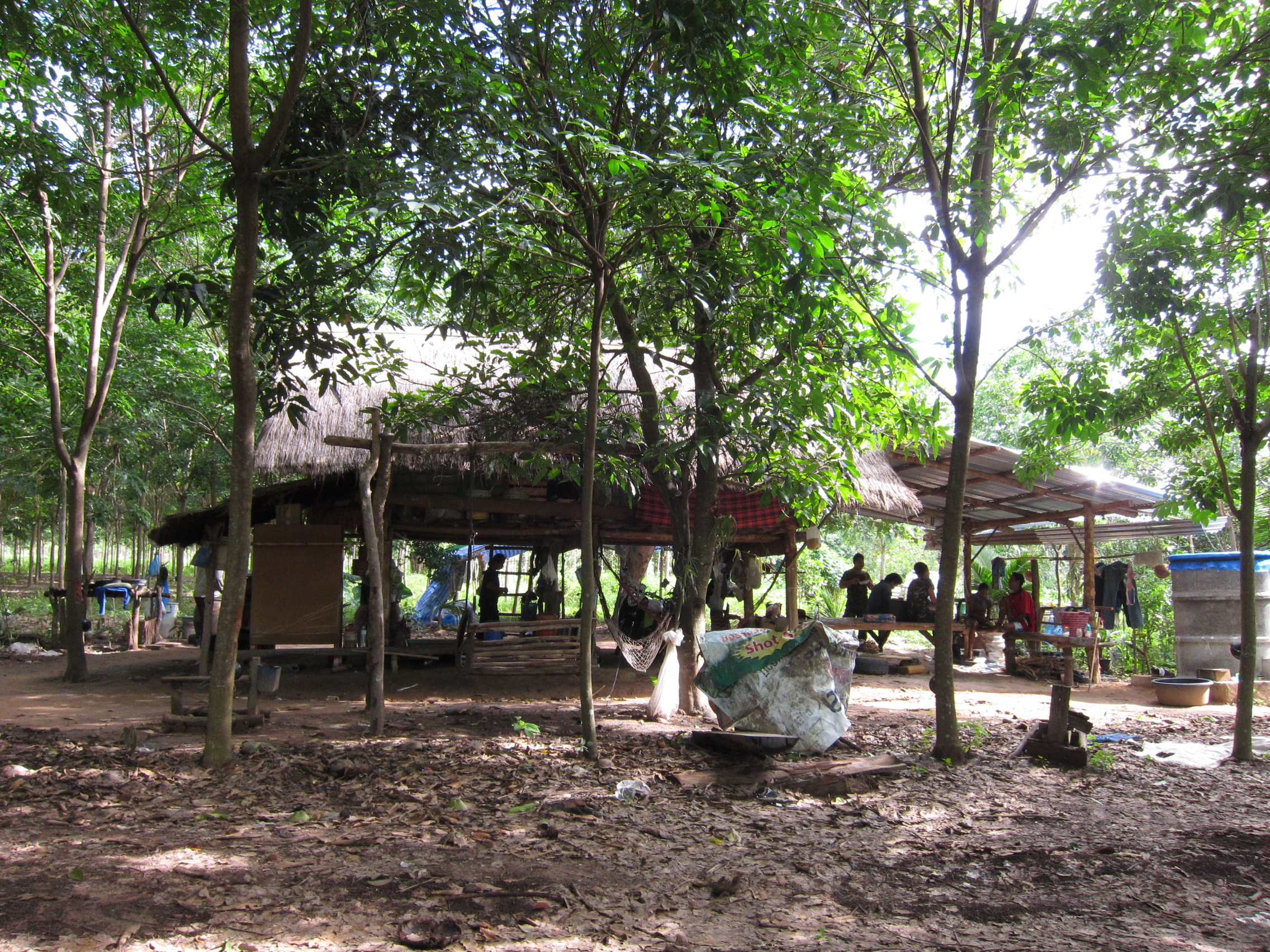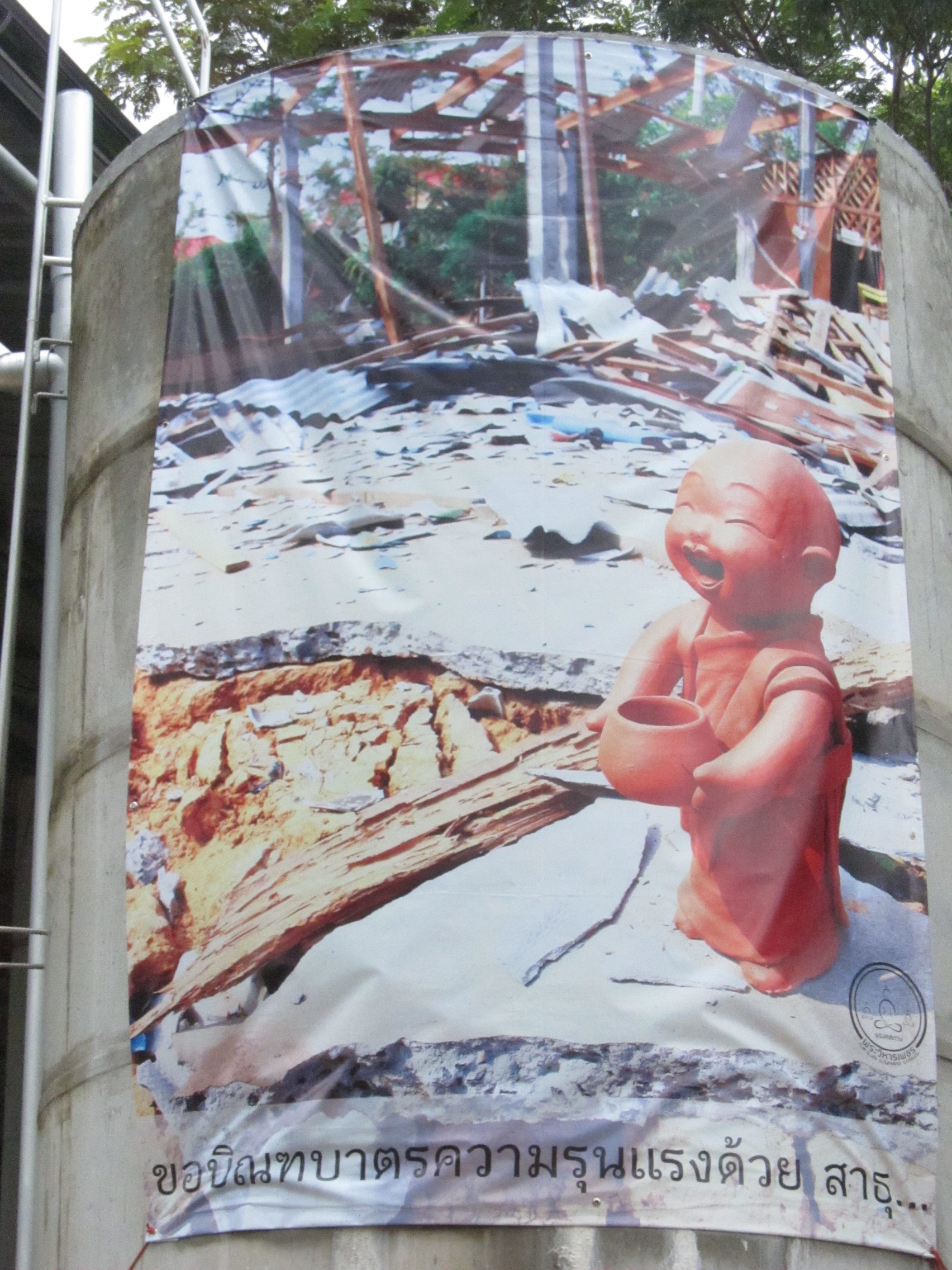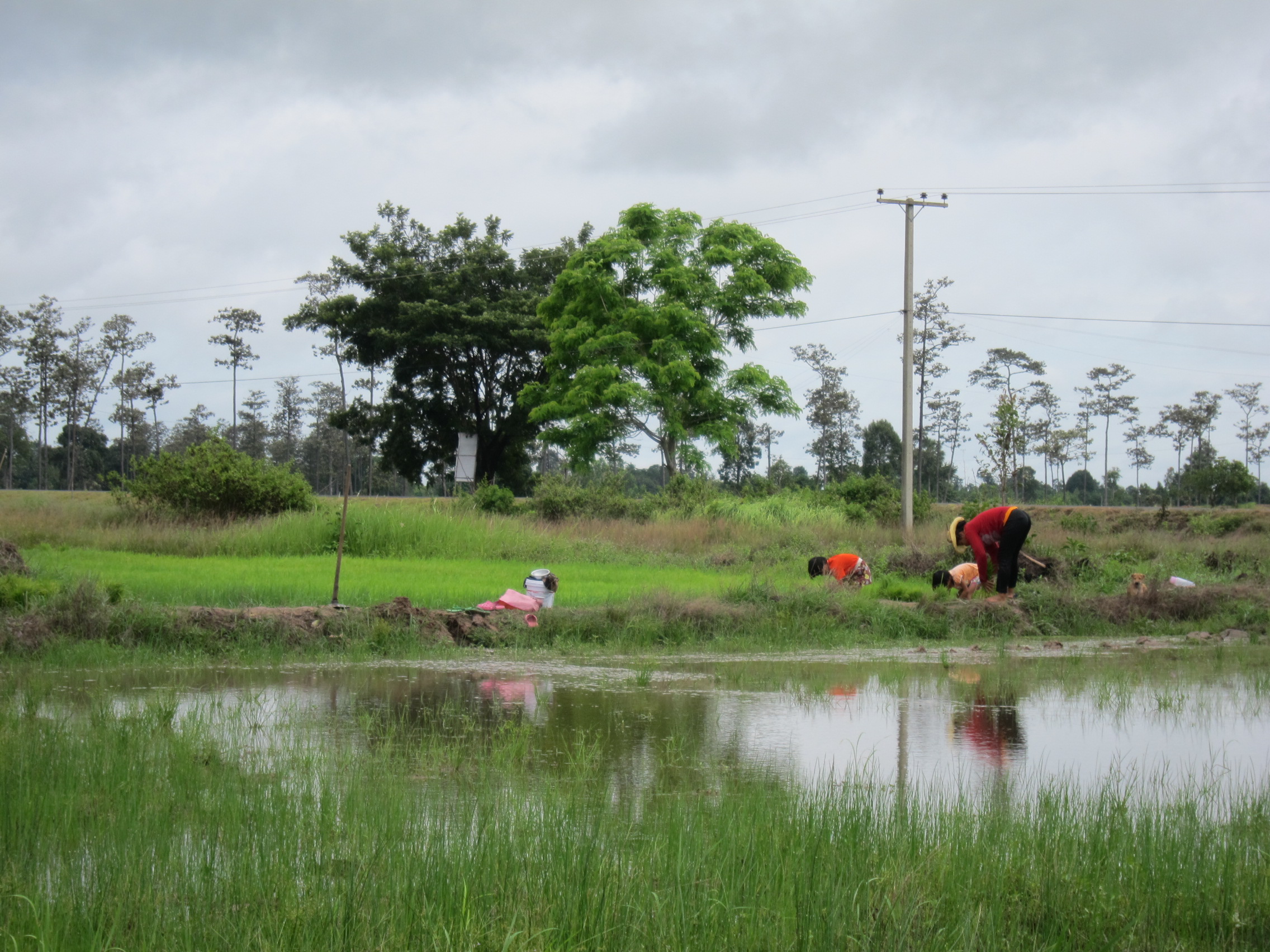On the outskirts of Phumsarol village, just inside the entrance to the Khao Phra Viharn National Park, past a Thai army roadblock and surrounded by rubber trees, sits the last hut of a former village, deserted since 1982. The small wooden structure now houses a group of Thai soldiers stationed inside a 4.6 square kilometer area of land that is currently at the center of an ongoing border conflict between Thailand and Cambodia.
The dispute is rooted in a French colonial map that demarcates the Cambodia-Thailand borderline and serves as the basis for a 1962 International Court of Justice (ICJ) ruling that the 11th-Century Preah Vihear (Khao Phra Viharn to Thais) temple belongs to Cambodia. The ICJ judgment, however, left the ownership of the surrounding 4.6 s q. km. of land adjacent to the temple unresolved. For decades, the border issue had been marginal, rarely entering the national political dialogue, but it reemerged in 2008 as Cambodia successfully registered the temple as a UNESCO World Heritage Site. Fueled partly by a rising nationalism playing out amid Thailand’s continuing domestic political crisis, the dispute has weighed heavily on locals living in villages along both sides of the border.
Sitting on a bench swing beside the lone hut, a soldier (who declined to state his name) says that troops stationed here make friends with Cambodian soldiers situated barely 500 meters from them, at times sharing resources such as water and bunker materials. On the Cambodia side, some soldiers were removed from the front line because they became too friendly with the Thais.
He conveys the sense that most soldiers here don’t want to fight. In his view, the two countries should share the 4.6 square kilometer territory, but that all depends on government policy, which neither he nor any other soldier on the ground can anticipate. Predicting what the army chief or government will decide next, he says, is as difficult as forecasting the weather.
Conflict reaches the village
On the afternoon of February 4, 2011, as Phumsarol villagers were enjoying the sports day celebration put on by the district council, they heard loud cracks and the sounds of explosions. After sundown, they saw flashes of light streaming across the dark sky, prompting everyone to make a beeline for the closest bunker among those that’d been built a year earlier when tensions at the nearby border began to simmer.
That evening, village defense volunteers (set up by the Ministry of Interior to monitor border conditions and protect residents) and police officers transported villagers – children and the elderly first – to the Kantharalak district office located 27 kilometers from the village. Others followed, but some were stuck when cars could no longer reenter the conflict area. Those left behind spent the night and next few days hiding in bunkers.
Soon, over 10,000 people from 13 sub-districts were gathered outside of the district office in an ad-hoc internally displaced peoples (IDP) camp funded by the Thai government and private donations. Some slept in the office meeting rooms, while most waited in tents put up outside. Within four days, 40,000 people had amassed in four different locations throughout Kantharalak district; in addition to the district office, three schools were used as shelters. Others stayed with friends or relatives in Sisaket province or beyond.
Waiting in Sisaket City, Phumsarol resident, Thanyapat, watched television reports showing images of wreckage in the village, including one of a fractured rooftop. As the camera panned closer, she recognized a decorative deer head mounted above the front door and realized it was her house that had been hit (the district subsequently gave her some compensation for repairs and built a bunker about 30 steps from her front door). For the first time in this ongoing border dispute, the army skirmishes that had taken place along the border had reached the village and touched their homes.
The early February clashes began with a flare-up at the border along Phu Makhua Hill and within the first three days spread to encompass a 30 square kilometer area covering Phumsarol and surrounding areas. According to Phumsarol village leader, Banyong Tansuk, 200 mortar shells hit the village on the first day, and shells and BM 21 rockets continued to fall in the coming days. A ceasefire was called on the 2nd day and broken on the 3rd, with fighting finally ceasing on February 16th. Both armies blamed their counterparts for instigating.
Most villagers stayed in the makeshift shelters for ten days, after which government officers told them to return home. Upon return, they found that seven houses were completely destroyed and others partly damaged. In addition to soldier casualties from both sides (as well as the handful of civilian casualties and injuries in Cambodia), in Phumsarol, at least four people were injured and one man died, evidently decapitated by a piece of stray shrapnel. Unable to find his head, his friends and family affixed a doll’s head to his body for the funeral.
Nationalism in the city, tensions at the border
Before the current dispute, villagers of Phumsarol were able to cross the border freely for different purposes, and for those who speak Khmer, cross-border friendships were made. Some would visit Buddhist temples on the Cambodia side to make merit, often with the help of Cambodians who would pick them up at the border and transport them to temple. Villagers would also collect food (mushrooms, baby bamboo) and farmers would cultivate rice on land next to the border, often staying overnight while tending the crops. Others traded regularly with Cambodians across the border. As a tourist attraction, the picturesque Hindu temple, situated atop a mountain overlooking both countries, stimulated the local economy, and during high season, food vendors made a stable income selling to visitors at the Thai side entrance.
Conditions changed, however, as tensions rose and the border was quickly militarized. After UNESCO’s inscription of the temple as a World Heritage Site in mid 2008, the disputed territory surrounding the temple became a testy issue in the context of Thailand’s deepening political crisis. Alarmist outcries for the protection of national sovereignty and territorial integrity came loudly from the People’s Alliance for Democracy (PAD, aka “Yellow Shirts”) protesters intent on bringing down the Samak Sudarevej government, which was aligned with the ousted Prime Minister, Thaksin Shinawatra.
By July of that year, troops had built up on each side, totaling over 1,000, positioning themselves at different points around the disputed territories. Skirmishes erupted early on and by October had increased along with troop reinforcement, each side accusing the other of firing first.
Meanwhile, nationalist sentiments were communicated from Bangkok, with PAD leader, Kasit Piromya, lobbing derogatory insults at Cambodian Prime Minister, Hun Sen, in response to demands for Thai troops to withdraw. When the PAD occupied Bangkok’s Suvarnabhumi Airport in late November to early December in their final push to oust the government, Kasit stated his plan to “use Hun Sen’s blood to wash my feet”, referencing a historic 1593 trouncing by King Naresuan of Siam over Cambodia’s King Lovek. Soon after, the Constitutional Court dissolved the government and Kasit became Foreign Minister in the new government.
Several villagers in Phumsarol say that a turning point in the dispute, as they’ve experienced it, occurred the next year, when nearly 2,000 PAD demonstrators arrived in Sisaket province to assert Thailand’s sovereignty over the contested territory. On September 19, 2009, as anti-government protesters (now from the “Red Shirt” camp opposing the new government) gathered in Bangkok to mark the anniversary of the 2006 coup that set off Thailand’s current political crisis, a large group of Yellow Shirts met a roadblock of hundreds of villagers and local riot police in Sisaket while attempting to reach the temple entrance. Clashes ensued, with both sides using slingshots, wooden stakes, knives, and other weapons, before the government declared martial law and eventually allowed a group of demonstrators to read their declaration before leaving.
When asked why they fought, villagers say they knew the Bangkok-based Yellow Shirts would raise tensions and provoke conflict, only to leave the villagers to suffer the consequences of strained cross-border relations and damaged livelihoods. Phumsarol village leader, Banyong, feels that the Yellow Shirts are free to voice their cause, but not in a way that will provoke conflict. After the incident, Cambodia stationed more soldiers at the border, and the villagers, he says, could feel the tensions about to boil. Cross-border fighting flared-up intermittently throughout the first half of 2010 and eventually reached the village the next February.
Militarization of border and village
In an otherwise serene landscape of modest houses, red dirt roads, and green patches of yam crops, reflective rice patties, and rubber trees, concrete bunkers are now scattered about Phumsarol village. The army built some over two years ago during the initial troop buildup; others appeared more recently. After the February fighting, the Sisaket provincial council had 62 new bunkers built throughout three sub-districts of Kantharalak. In addition, several household clusters have homemade bunkers made of wood scraps, metal sheets, and other debris covering dugouts lined with sandbags. The bunkers are a reflection of the village’s recent militarization and constant reminders that the people are now living in an area of potential conflict and destruction.
Though fighting isn’t constant, and incidents like the one in February haven’t occurred since, militarization of the border has impacted Phumsarol villagers in varying ways. For one, the border closing has halted all cross-border trade. Since 2004, longtime resident, Pranom, would cross the border daily to sell raw materials to Cambodian food venders near the temple. Her Cambodian customers would buy the wholesale food in the morning and then pay her in the afternoon after the day’s work. When the border closed, her business ended abruptly and several customer debts were left unsettled. She eventually started a restaurant that brings in substantially less income than her previous business, especially after the recent fighting and evacuation.
Nine Phumsarol residents, including Pranom, used to cross back and forth to sell fresh materials to Cambodians, and 92 others worked as vendors at the entrance to the temple. With the border militarized and the tourist destination closed, the local economy has suffered. Those who had farms were relatively okay after the border closing, but those without land, including Pranom’s niece, had to move to Bangkok to find jobs as housemaids and drivers. Pairat, a food vendor at the temple for over 20 years, now runs a restaurant in front of her daughter’s house that mainly caters to soldiers and government officers.
Aside from economic repercussions, a prevalent feeling of fear persists in the village. Since the February shelling, locals are afraid to venture near the border. Those who used to plant rice in the area don’t dare do so now that Cambodian soldiers are stationed in the vicinity. Food that was previously available to forage is also off limits due to risk of being caught in a skirmish. When more fighting erupted at the border in late April, frightened villagers packed their bags to evacuate again. Fortunately, the violence didn’t spread to the village this time. Still, locals are on edge. As one village leader says, people are now frightened every time they hear thunder and lightning flashes.
National politics, regional context, local impact
On July 18th, the ICJ ordered an immediate withdrawal of Thai and Cambodian military personnel from a demilitarized zone around the temple, stating that both parties have an international legal obligation to comply. The ruling also stipulated that observers appointed by the Association of Southeast Asian Nations (ASEAN) be allowed to access the demilitarized zone. Both countries expressed satisfaction with the verdict, with outgoing Thai Foreign Minister Kasit and Prime Minister Abhisit Vejjajiva adding that further bilateral negotiations are needed to resolve the conflict. (The decreasingly relevant PAD demanded the government and military reject the ICJ ruling and keep troops in the area to ward off Cambodians.) Compliance with the ruling, however, is predicted to be a drawn-out process.
The Cambodian-Thai border conflict is the type of traditional, nationalism-fueled interstate territorial conflict that seems almost antiquated in today’s world. Importantly, it is a manifestation of Thailand’s ever-entangled internal political conflict, in this case playing out in crumbling bilateral relations within a larger context of ambitious plans for regional integration and community-building among the ten countries of ASEAN, which has so far been ineffective in addressing the spat between two of its members. Most importantly, the brunt of the suffering has been local, falling on the border communities in both Cambodia and Thailand.
Villagers in Phumsarol have varying views about Thai politics and the territorial dispute. A few are expressly nationalist and want the temple to belong to Thailand. One village defense volunteer, speaking at a recent community forum, suggested that a wall of Thai homes be built along the disputed territory to block any Cambodian encroachment. Others don’t care who owns the territory or temple, as long as they can live peacefully and benefit from cross-border trade and an active tourist economy. Many blame the Yellow Shirts for inciting conflict, and some are distrustful of Cambodians, taking for granted that they struck first. Regardless of the nuances of their views and assumptions, most villagers never thought about UNESCO, world heritage, or the 4.6 sq. km. of land before the current conflict, and none of them chose to fight this battle.
 Facebook
Facebook  Twitter
Twitter  Soundcloud
Soundcloud  Youtube
Youtube  Rss
Rss 



